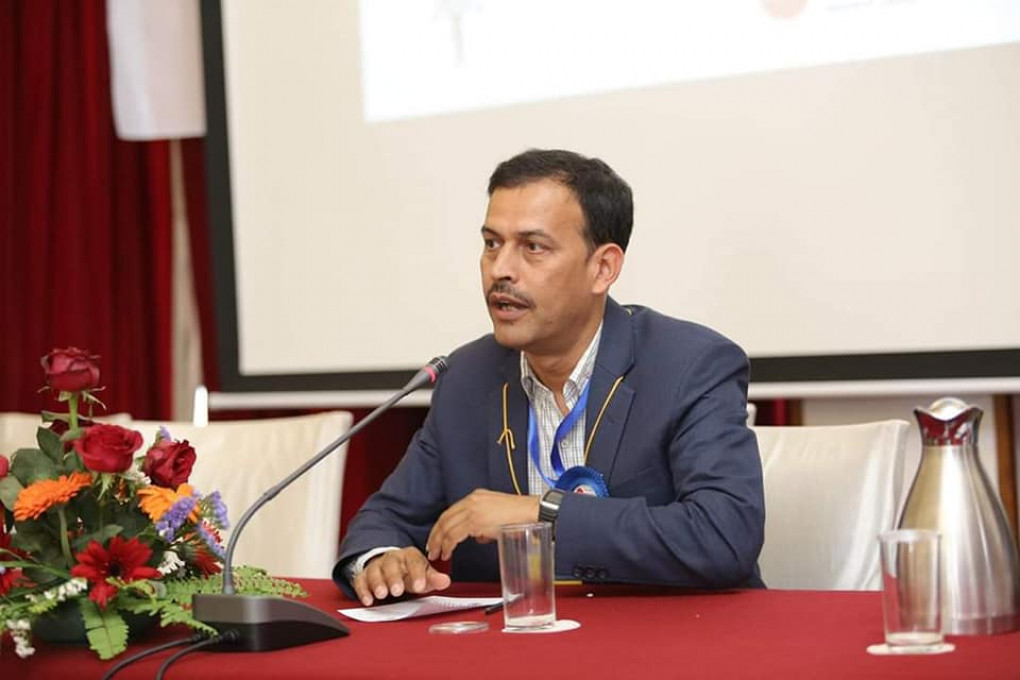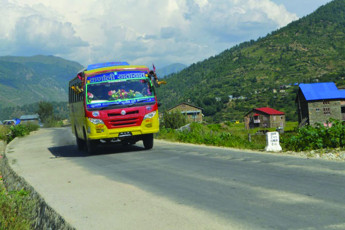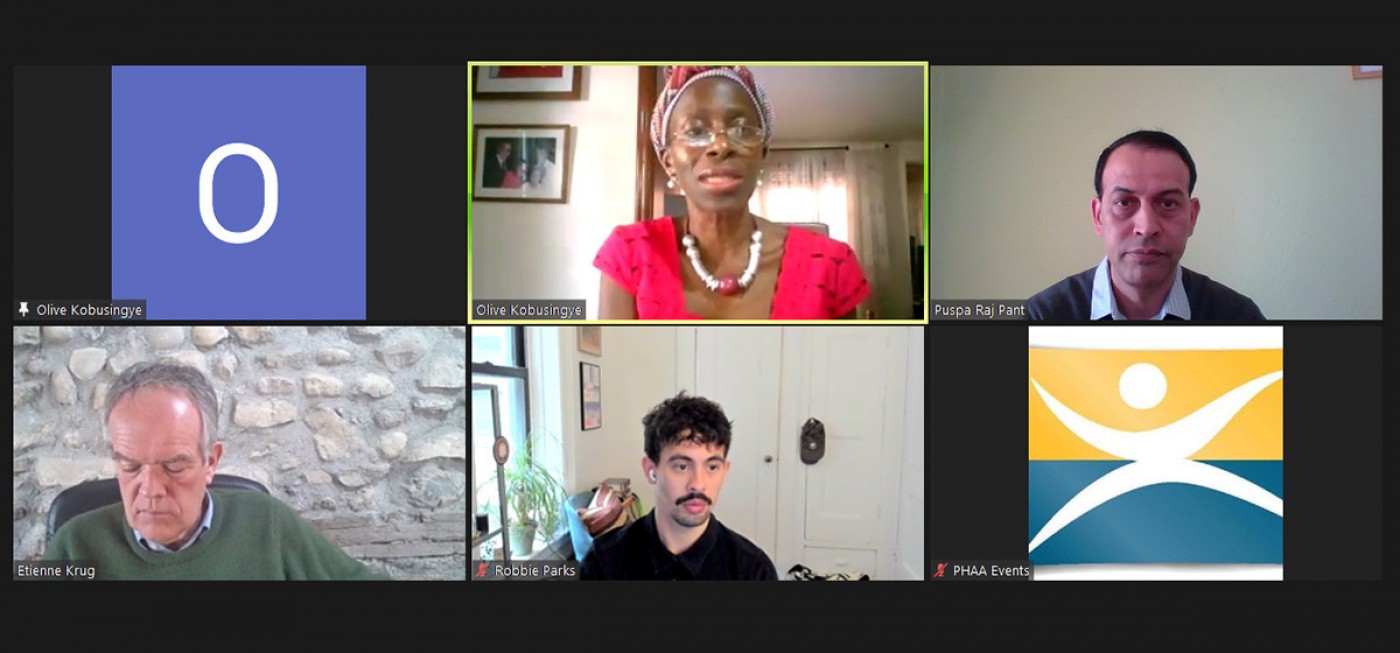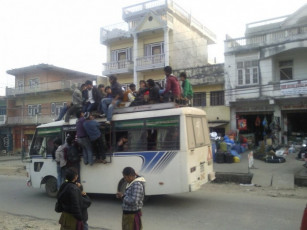Road Safety Training For External Partners: The Open Learning Campus
The World Bank Groups, Global Road Safety Facility organised an online course for external partners via the Open Learning Campus platform. This facilitated version of the course was live during 6 April - 10 May 2020. This course provides an introduction to road safety, impacts caused by injuries and deaths, global data on mobility, and the global plan of action for safety improvement. A considerable part of the course is spent on understanding the importance of road infrastructure, implementing the Safe System Approach with global instances cited, and managing additional aspects such as police enforcement. It also looks at methods of safety implementation and examples of worldwide successful case studies. Lastly, the course examines the capacity reviews and project management operations carried out by the World Bank for improving road safety.
Here I have presented my opinion as group discussion and response to core questions. I hope this will still be useful for readers. Please click above and explore the self-paced course yourself.
1.1 What would be the focus of the submission you would make to government about the scale of the economic impact of RTI’s in your country?
The quick answer would be the burden and consequences; then the measures to address them and what is missing.
In the recent past, I have applied a combined approach of explaining data, responsible causes and consequences in plain language so that it equally received by general public and decision makers. International reports and peer reviewed journal articles were great sources to reference while making arguments regarding economic consequences of road traffic crashes. I found working with media is of particular help to create a power-pressure so that responsible authority in government position compelled not to ignore this important issue. As many of the colleagues have posted many useful things to include in the submission in this discussion thread. I also found that using demographic characteristics of affected people and related them to family and society with a calculation showing the value of lost contribution of those deceased, severely injured or traumatised. Decision makers may not always tend to understand or accept the 'text' only with technical terminologies, statistics and facts but they are happy with simple language statements with monetary equivalent or years of life lost due to road traffic crashes. I think it also helps them to make case for support within government hierarchy.
For example, when I approached an MP (member of parliament), I explained how different sources of data described burden of road traffic injuries in Nepal, we discussed about current status of road crash data collection in Nepal, some examples differences from hospital-based studies and traffic police statistics. This convinced them that they do not know how many people in Nepal suffer fatal or nonfatal injuries; therefore, the need for an efficient data system was acknowledged. Later we opened a discussion that only strengthening data collection does not save lives, this was the main departure point to influence them on asking how can we solve this problem. Again, reference to international literature, guidelines, proven interventions and most importantly, UNRSC' Five Pillars of Road Safety was introduced to these political decision makers.
In summary, what to include in our application/submission to political decision-makers or government depends upon where we stand at current time. I provide the example from Nepal, where credible statistics in lacking. But if I was making this case for another country, I would have to consider something different.
1.2 What submission would you make to government about the opportunities and levers that do exist to prevent RTI’s?
Once the decision-makers are convinced, you get a synergy. They become the part of the agenda. Sometimes they come with solution themselves. Although, it is not scientific but I have had a truly insightful remark from the Transport Minister of Nepal at the Global Conference (Sweden). He told a very important thing - "it is very important that we will need to strive for halving road crash deaths and vision zero, there is no disagreement. But for our country where thousands of people are killed in roads, even if achieving a smaller percentage of reduction will still save thousands of lives." With this, what I understood - he might have been relating was 1) the existing heavy death toll, 2) existing resources available, and 3) potential benefits in terms of saved lives.
In this context, when we come forward with low-cost but high-benefit measures they will be very happy to accept and incorporate in their plan. One such agenda could be existing law-enforcement and capacity strengthening. For example, Nepal has legal provisions for motorised vehicle and transport management but established decades ago. Mapping the existing capacity, resources available and need for technical and financial resources would be the departure point for a comprehensive national road safety management system in future.
2.1 What are the key high-level principles behind safe system thinking? How will you promote awareness and understanding of these principles in your organisation?
The high-level principles of behind safe system thinking are: 1. People can make mistake that may result into road crashes; 2. Human body can only tolerate limited amount of physical force generated from a crash; 3. There is a shared responsibility among all stakeholders to prevent people from road traffic injuries including road safety at design, construction and use; and 4. Road safety and transport system must operate in a way that it protects road users even a part of it fails.
I would describe the safe system approach and the difference with traditional approach of road safety with decision-makers and stakeholders. We can also review past actions and learn lessons why we could not achieve desired amount of road safety.
It will enable us to start setting targets and work in collaboration to achieve those targets related to different aspects of making road safer i.e. safer speed, safer roads, safer vehicles and safe road users. Ideally, if the leadership and decision-makers are enabled to realise the urgency of making including road safety as a national agenda plus parallel advocacy engaging stakeholders.
2.2 What are the three levels of the road safety management system and how do they relate to each other? What do you understand the ‘results focus’ institutional management function to be and what does it require of senior management in your country if it is to be achieved?
The three interrelated levels of the road safety management system are: institutional management functions; interventions and results. This model of the RSMS has been developed such a way that it is applicable in all countries of the world.
The interrelation among these three levels can be described better when Road Safety is considered as goods or products. Thinking about the production process: the institutional management function can be seen as input and resources which in combination create a processing step (interventions) and the products (road safety) as outputs. The quality of the final product is determined depending upon the input and used resources.
Therefore, in order to achieve desired level of road safety, my country should focus on all seven elements: However, the following 'result focus' items considered, in order, would bring positive changes (adapted from Eric's notes):
- Confirm the lead agency for road safety
- Establish road safety capacity (staff and resources) in the key agencies and further develop staff through training and experience in other agencies
- Establish a more useful crash data system, to enable crash locations to be mapped and black spots identified
- Arrange for crash data to be shared between agencies;
- Train local health staff as paramedics;
- Tighten vehicle safety standards (features) for new and used imported vehicles;
- Draft a road safety strategy, including targets and actions to deliver desired outcomes;
- Introduce rear seat belt wearing, child restraint wearing and other high priority legislation.
- Reorganise the national road safety governance arrangements
- Document the roles and responsibilities of the key agencies in regard to road safety to improve decision-making arrangements;
- Train Traffic Police in drink driving enforcement, speed enforcement and procure additional speed radar guns/new mobile cameras and alcohol breathalysers;
- Arranging for other performance data (eg., number of RBT drink driving tests; % positive tests; number of speed infringements; results of blood testing for alcohol of killed and seriously injured drivers/ riders in crashes; to be collected by nominated agencies and the trends reported by the nominated agency, with the data shared between agencies
- Developing an agreed business case approach across agencies, with the full involvement of Finance, and developing an agreed template for submission of project proposals to NRSC to seek road safety programs investment funding
3.1 How would you apply network safety management in your country to identify and scope a worthwhile safety investment program?
Network Safety Management is a modern replacement to traditional Black Spot Management (BSM). Although BSM and NSM both techniques utilise road crash data – therefore both considered to be reactive measure of road safety. BSM considers the treatment at point location identified as a Black Spot whereas the NSM approach considers improving the safety across the road section of 2 to 10 km. This also addresses the disadvantage of BSM where the black spot can move to a different location across the road section.
From existing national road crash data there are a number of black spots identified. I would utilise the approach of Network Safety Management by revisiting the list of black spots but would apply the improvement to the entire section rather than a point to black spot location. In this way, it will remove potential black spots throughout the entire road network. By doing so, we will be better utilising investments -- that might have been allocated in different titles for the same road section.
3.2 What do the survivable crash speeds of various crash types (head on, side impact, run off road, pedestrian crashes) strongly suggest for the setting of speed limits on sections of your infrastructure networks - in both urban and in rural settings.
In Nepal, we have different authorities responsible to look after roads according to administrative jurisdiction but the speed limits allocated for different road sections according their geometry and location had been done ad hoc basis and the time has come to move away from such approach. Thankfully the National Road Safety Assessment Framework is being developed. However, our past experience has shown how slow such process and sometimes we do not see a final product. I hope this time the situation has positively changed and things might have been moving faster. I think the resources seen by us during this course are of very high usefulness and we must clearly articulate the implementation mechanism alongside the plan with resources required to achieve the time bound targets.
Response to Eric's question should also include - whether we have made is helpful to drivers to know from which point what maximum speed limit starts with properly installed signage in right distance of the right section of road. Even if there are some sort of these signage, do we have a mechanism to monitor whether the drivers are following the speed limits, do we use technology or what are the penalties if caught violation!? Unless we think about the drivers are made aware i suspect to achieve actual speed limit in operation. There are so many useful responses in this thread which we can take home.
Up until now in Nepal, we are following traditional approach of road safety management where the driver or road users held responsible to maintain road safety therefore maintaining the speed limit us also up to the drivers but with limited help with adequate signage on the roads. I don't think we have been able to impart this knowledge to drivers during their training and tests for obtaining a driver's licence. Thirdly, due to poor law enforcement we cannot monitor it. So far counting deaths, injuries and property damage is one aspect.
But I also live in Bristol (UK) where 20mph speed limit has proved to be beneficial in saving lives but it needed a lot of background work and investment including installation of speed cameras, road sign painting and street markings.
4.1 What measures could your country take this year to improve the level of safety of its vehicle fleet?
For a country that do not produce cars or vehicles but imports most of them do have their own limitations. But when regulated the import it can be easier to maintain the safer vehicle fleet. For example, only Global NCAP safety rated cars to be allowed to import. developing and enforced implementation of vehicle safety regulations, applied UN Vehicle Safety Standards.
In addition, to ensure regular and periodic physical inspection of the vehicle by trained and skilled technicians, there is a need of nationwide authorised vehicle workshops.
There is also a need to monitor unauthorised vehicular modifications, i.e. installation of additional seat.
4.2 What enforcement initiatives to reduce fatalities would be an early priority in your country and what would you recommend to ensure their successful deployment?
- Considering the highest volume and casualty related to two-wheeled motorised vehicles (motorcycle, scooter, moped etc); compulsory and correct use of a standard helmet.
- Changes to driver licensing tests; because in Nepal a person who want to apply for a driving license has to complete a theory test of only 20 questions to which they need to answer only 10 correctly. There is not theoretical understanding of safety in the current driver license test system.
- Mechanical fault is another issue responsible for road crashes, therefore an urgent enforcement of vehicle fitness testing and certification is very important.
- Although I am mentioning it in number 4 but it is equally important to enforce strict speed control measures
These measures need use of technology to do it remotely but also additional human resources in the ground to ensure the roadside enforcement.
5.1 Describe in outline (in no more than two paragraphs) what Institutional capacity building for road safety means, and what priority activities should be a focus if capacity is to be effectively strengthened at a national level.
Institutional Capacity Building for road safety means the technical assistance and related investments. Such investments are in terms of creating or establishing a publicly accountable national agency solely responsible for road safety, strengthening of management and operational capacity of this lead agency furnished with adequate amount of resources – financial, human resources and institutional arrangements. Institutional Capacity Building also refers to improve the capacity by providing road safety related knowledge and skills with training programmes for individuals with decision-making authority i.e. policy makers, executive managers, road engineers, health practitioners, traffic police officers, and other official involved in the management, design and implementation of road safety programmers.
Current national priority activities to focus is to make the National Road Safety Council functional by allocating adequate amount of financial resources and make it publicly accountable with a national road safety strategy. This will strengthen Nepal's road safety capacity.
6.1 What role could you see road safety twinning activity (between in-country agencies, with other country’s agencies and for example, with research experts internationally) playing in strengthening road safety management capacity in your country?
International Agencies such as World Bank, Asian Development Bank and UKAid have been working in the field of road transport improvement and investment in Nepal for a very long time. With the support of these agencies Road construction and institutionalisation of any road safety activities initiated. In addition, many individuals, professionals, policy makers and students have been given opportunities to get training on road safety. In addition, these agencies have also contributed in creating road crash data management system and research activities too. All these activities have contributed to expand road safety activities by knowledge transfer.
7.1 Which two modules in the six you have studied appealed to you as being the most likely areas of activity to reduce fatalities and serious injuries if well implemented in your country and why have you chosen those two?
To be honest I fully enjoyed all the six modules. Ranking among them is difficult because, when thinking about Nepal context which needs to work on all five pillars of road safety together in order to reduce fatalities and serious injuries. Above all I have ranked the module 2 (The Safe System Approach) and 4 (Managing Additional Aspects of Road Safety) because of the following reasons:
The module 2: deals with what is the safe system approach and also conveys in very clear that human error is inevitable but traffic fatalities and injuries are not. it also describes the components of result-based Road Safety Management System, and how to assess RSMS for countries.
The module 4: describes lifesaving solutions that is directly pertinent to your question of reducing deaths and injuries. as mentioned earlier, it suggests how a modern method of road safety policing and enforcing should be done. It also sets out the importance of vehicle safety standards and the importance of applying UN Vehicle safety regulations by countries; in addition to the reference to Global and Regional NCAPs. Similarly, this module also reminds that post-crash response as a component of a safe system approach that further help saving lives even after a crash. Above all, this module also describes Funding Mechanisms and cost estimation for road safety.
Note: Eric William Howard is course tutor.
Thank you; Dr Puspa Raj Pant; 3 May 2020.
1592308051.png)









1592308051.png)